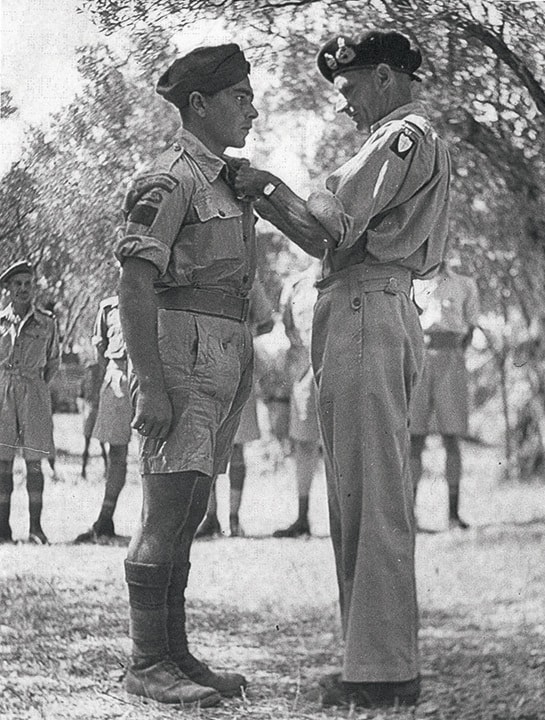As the years of war become distant, it has become increasingly difficult to find and speak with veterans of World War II, but thanks to research from a group of students at Ponoka Secondary Campus (PSC), those stories are seeing the light of day.
Every soldier who died in the First and Second World has a story to tell and research from former students and members of the Broncs World Tour, Hannah Allin and Adam Rowland, has now allowed the story of George Patenaude to see the light of day.
The two spoke at a PSC Remembrance Day ceremony Thursday, Nov. 5. Their dedicated research showed that Patenaude was born in Ponoka Jan. 20, 1920. At 19-years-old, in 1939, he enlisted as a private with the Royal 22e Regiment of the Canadian Army.
Patenaude fought with the Allied forces in Italy when he was sent there in 1943.
Further research by the students showed that Patenaude showed bravery and skill in a tight spot. On the night of July 18, 1943, his platoon came under enemy fire, which caused injuries among troops. Using a light machine gun, called a Bren, Patenaude helped the vehicle carrying them reach safety.
Rowland and Allin state in their research that at one point in the evening, Patenaude managed to single handedly rush to an enemy pillbox, or concrete guard post, and capture the post while having bullet wounds in both his buttocks and leg.
Patenaude later suffered shrapnel wounds to his head on Dec. 16 of that year, which eventually proved fatal.
By the time he reached the age of 22, Patenaude had received a 1939-45 Star, the Italy Star, Defense Medal, War Medal, the Canadian Volunteer Service Medal and the Canadian Military Medal.
For their research, Rowland was allowed to tour the military archives and La Citadelle in Quebec City, Que. and the mess hall named after Patenaude. Generally the public is not allowed in mess halls, said Rowland.
Allin added that there was quite a bit of research and time required to garner as much information as they did. Their research covers more information than what was provided in this story.
Being able to go to Europe and see Patenaude’s grave site was a significant part of the research, said Allin and Rowland. They were able to get four gravestone rubbings from the trip, one of which is being donated to the La Citadelle military installation.
